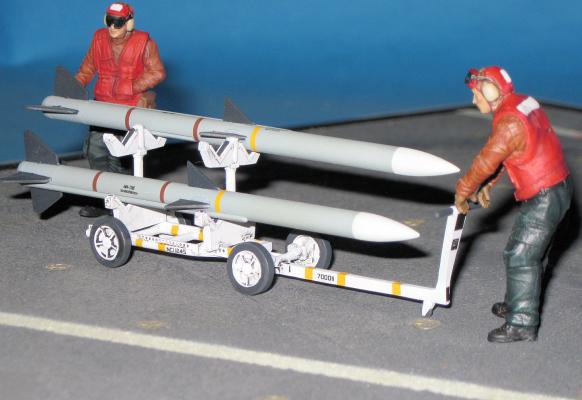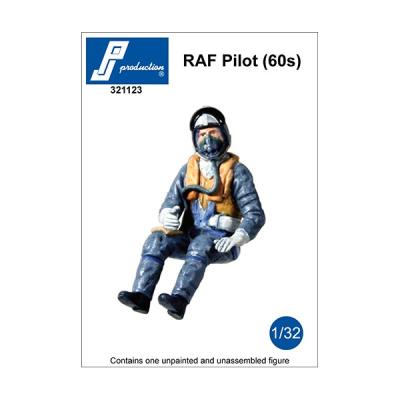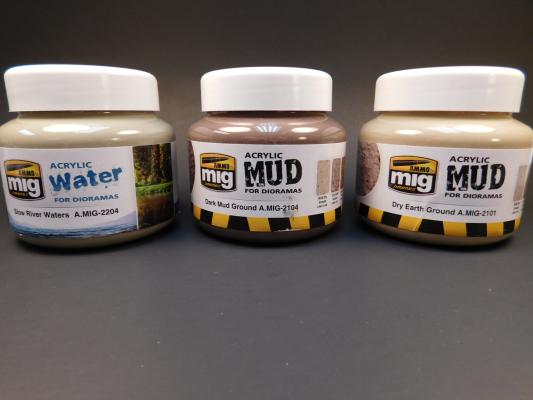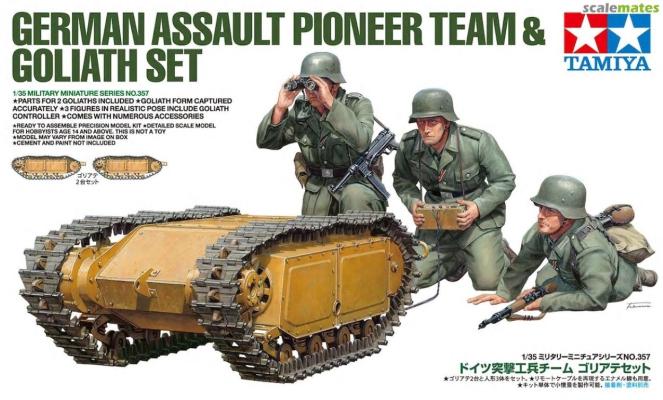Videoaviation is an Italian manufacturer of superb aircraft accessories, ground support equipment and figures in all three popular scales. I have had the luck to review a few of these and have always been impressed by the excellent casting and design of their kits. This newest set, a 1/32nd scale US Navy MHU-191 Missile cart and two ordnance man is excellent. The set consists of parts for a MHU-191 cart set up for missile transport. There are two ordnance men in different poses. All parts are cast in light tan resin with crisp details and minimal seams. Parts breakdown is as follow:
Welcome to the IPMS/USA Reviews site!
Introduction: The primary organization of the IPMS/USA Review website is by IPMS/USA National Contest Class. Within each Class there are sub-menus by kits, decals, books, etc. The Miscellaneous Class is for items that are not class specific or that cross two or more classes.
IPMS/USA Members: We encourage you to submit reviews, both here and to the Journal. To volunteer for membership in the IPMS/USA "Reviewers Corps" and submit your own reviews, please read the Guidelines For Submitting Product Reviews.
Manufacturers, publishers, and other industry members: IPMS/USA is pleased to offer your company the opportunity for product reviews. All product reviews are performed by IPMS/USA members, and are posted in the publicly-accessible section of our website. With very few exceptions, we perform full build reviews of new kit releases, aftermarket products, and supplies. If you would care to provide product samples for review, please contact John Noack, IPMS/USA 1st VP.
To learn more about IPMS/USA, please see our About Us page.
PJ Productions from Belgium is well known for their wonderful resin figures and accessories. This instance is a RAF pilot in flight suit from the 1960’s in 1/32nd scale. The kit includes four resin pieces with the body being one-piece cast and the arms and head separate. Casting is good with a slight amount of flash and is all done in cream colored resin. The box is your instructions as far as color for the pilot and his uniform.
Assembly is first with the casting lines being removed from the arms and these were attached to the body. The head can remain separate for painting if desired. Fit is good, so it can be added later. There were slight seams at the arm and I used glazing putty smoothed with lacquer thinner to eliminate the seams.
PJ Productions from Belgium is well known for their wonderful resin figures and accessories. This latest kit is a RAF pilot in tropical flight clothes from the WWII era and is made in 1/32nd scale. The kit includes five resin pieces with the body being one-piece cast and the arms and head separate. Note that there is a separate piece for the oxygen hose and it is small and between the head and left arm. Don’t mistakenly throw it away. Casting is good with a slight amount of flash and is all done in cream colored resin. The box is your instructions as far as color for the pilot and his uniform.
Assembly is straightforward. Get rid of the casting blocks and seams by gently scraping. Glue the arms onto the body. I used glazing putty smoothed with lacquer thinner to eliminate the seams. I added the oxygen hose which fits into the hose molded into the body and runs to the side of the mask on the face.
Ammo by Mig Jimenez is expanding their line of acrylic diorama products with these products; Dry Earth Ground #2101, Dark Mud Ground #2104 and Slow River Waters #2204. These products come in a large mouth, 250ml plastic bottle. The Dry Earth Ground is a tan, gritty paste like it has fine sand in it. The Dark Mud Ground is a dark brown, smooth paste. The Slow River Waters is a slimy green gel. The bottle says you can pour this, but it seems way too thick to do that. Here are the descriptions from Ammo’s website to explain each product better:
Tamiya has recently released their own boxing of the diminutive Goliath tracked mine. The kit comes complete with two mines and control boxes, tethered by steel wire to one of three highly detailed figures. Molded in crisp, yellow plastic, the contents of the box are typical of Tamiya kits, and the three figures are just about as good as it gets in terms of detail and craftsmanship.
History
The Goliath tracked mine – (Leichter Ladungsträger Goliath or Goliath Light Charge Carrier) was a name given to two German unmanned, disposable demolition vehicles used during World War II. These were the electrically powered Sd.Kfz. 302 and the petrol-engine powered Sd.Kfz. 303a and 303b. The -302 is the version represented in the Tamiya kit.















